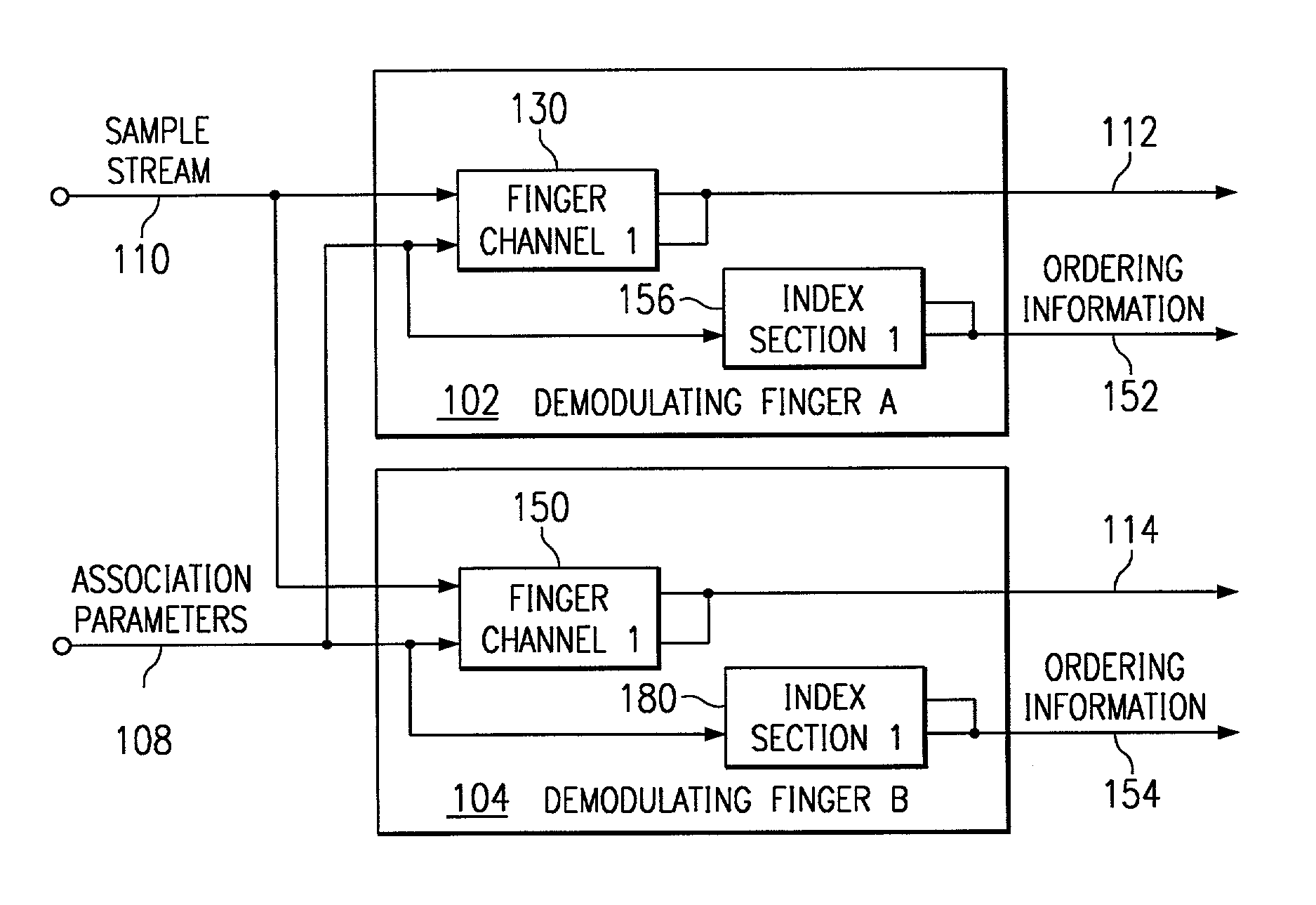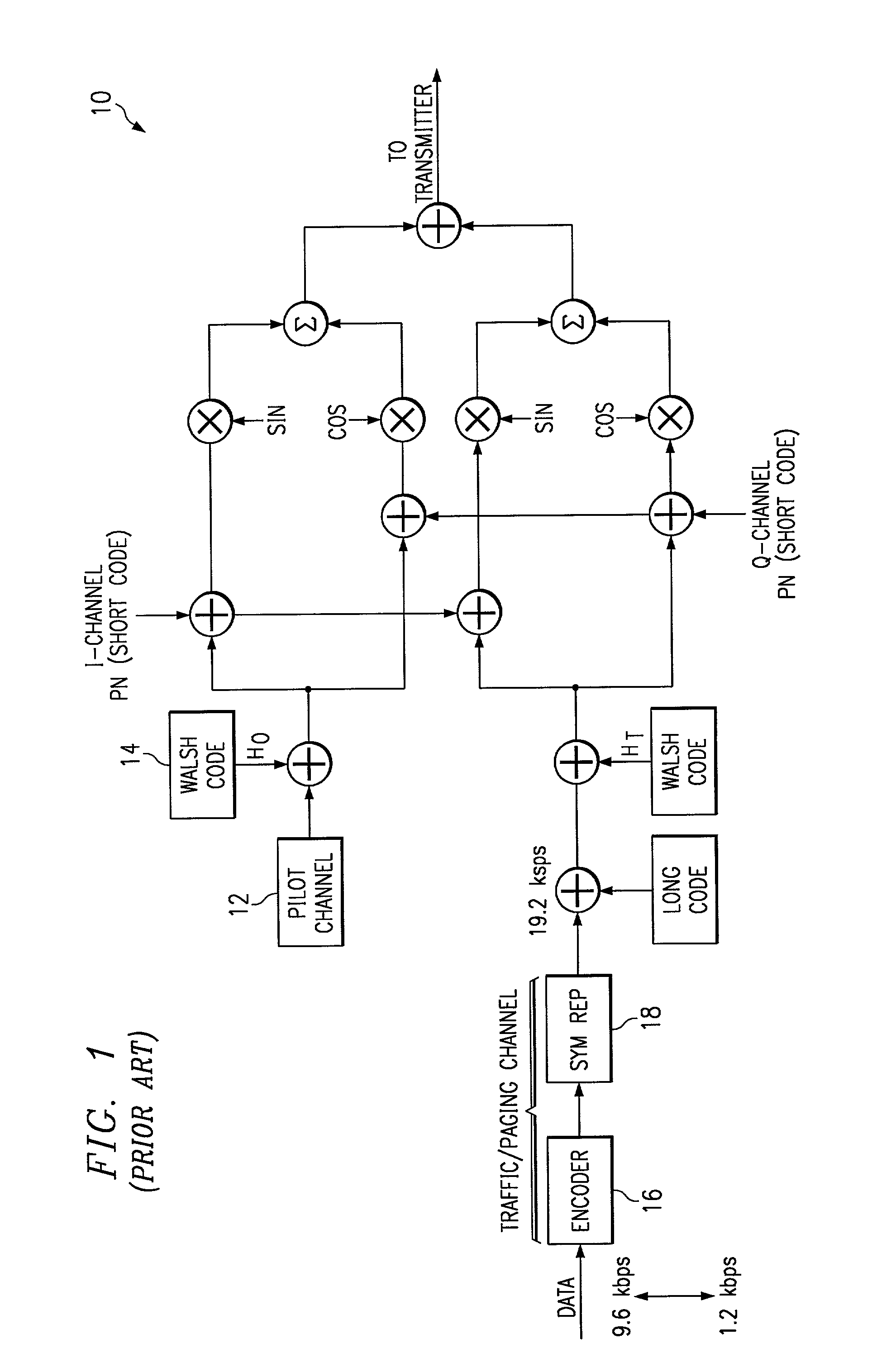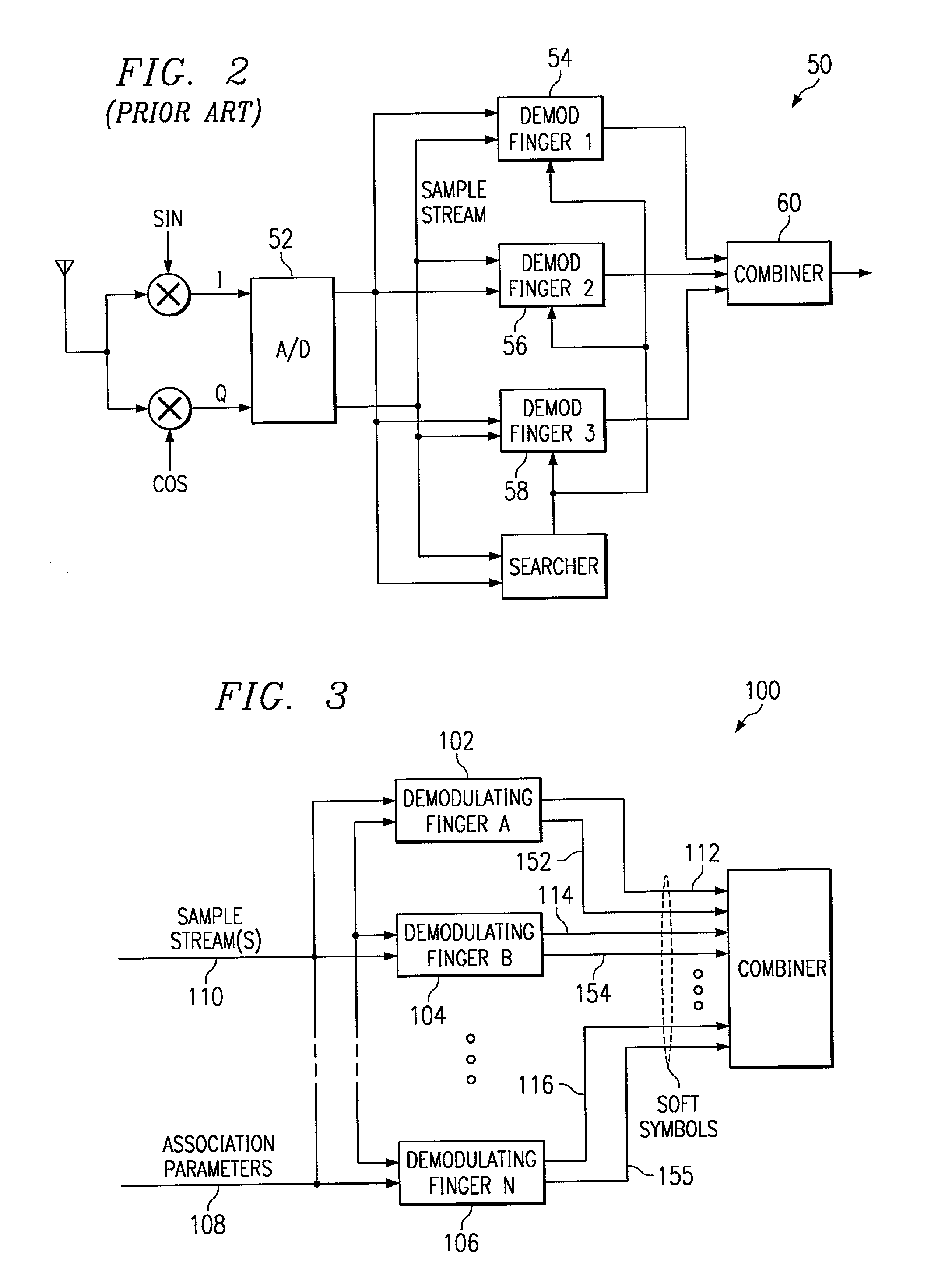System and method for demodulating associated information channels in direct sequence spread spectrum communications
a technology of associated information channels and spread spectrum, applied in the field of direct sequence spread spectrum (dsss) communications, can solve the problems of reducing flexibility, reducing flexibility, and reducing the efficiency of multiplexing, and achieve the effect of efficient multiplexing
- Summary
- Abstract
- Description
- Claims
- Application Information
AI Technical Summary
Benefits of technology
Problems solved by technology
Method used
Image
Examples
Embodiment Construction
[0028]FIG. 3 is a schematic block diagram of the present invention system for demodulating a sample stream including a plurality of associated information channels in a DSSS communications receiver. The system 100 includes a plurality of demodulating fingers. Demodulating fingers A (102), B (104), up to n (106) are shown, where n can be any whole number. The invention is not limited to any specific number of demodulating fingers, but one embodiment includes n=6.
[0029]Each demodulating finger in the plurality of demodulating fingers 102–106 has a modulation parameter input on line 108 to accept modulation or association parameters and a sample stream input on line 110 to accept a sample stream. Each demodulating finger 102–106 has a soft symbol output to supply ordered soft symbols from associated demodulated information channels. Specifically, demodulating finger A (102) has a soft symbol output on line 112, demodulating finger B (104) has a soft symbol output on line 114, and demod...
PUM
 Login to View More
Login to View More Abstract
Description
Claims
Application Information
 Login to View More
Login to View More - R&D
- Intellectual Property
- Life Sciences
- Materials
- Tech Scout
- Unparalleled Data Quality
- Higher Quality Content
- 60% Fewer Hallucinations
Browse by: Latest US Patents, China's latest patents, Technical Efficacy Thesaurus, Application Domain, Technology Topic, Popular Technical Reports.
© 2025 PatSnap. All rights reserved.Legal|Privacy policy|Modern Slavery Act Transparency Statement|Sitemap|About US| Contact US: help@patsnap.com



